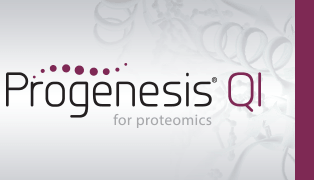How is absolute quantitation by Hi-N for HCP analysis calculated?
This calculation is related to that for absolute quantitation by Hi-N. The amount of calibrant per run is first defined in fmol (value X in formulas below).
(1) Global normalisation
The global ratiometric normalisation is used to standardise the calibrant along with all the other analytes at the peptide ion level. This is done to correct for any global shifts in signal.
(2) Relative protein abundance calculation
The relative abundance of every protein is then calculated after normalisation. This is the average of the abundance of the N most abundant peptides for each protein across all their peptide ions as described here.
These two steps provide a value for the normalised relative abundance of the calibrant protein in each run:
A (measured, normalised abundance of calibrant) = A1, A2, A3... An for n runs
They also provide a value for the normalised relative abundance of HCP contaminants in each run:
H (measured, normalised abundance of a given HCP contaminant) = H1, H2, H3... Hn for the same n runs
Terminology aside, this is also identical to the process for non-HCP-analysis absolute quantitation – nothing varies to this point.
(3) Calculating absolute amounts using a calibrant-derived relationship between abundance and amount
At this point, the process does differ from non-HCP-analysis absolute quantitation, by basing estimates of a protein amount solely on the calibrant in the same run, rather than an average-stabilised measure. The relationship between defined calibrant amount present (X fmol) and observed calibrant abundance (A) provides this information.
To estimate the amount of a protein in fmol
HCP protein “H” in fmol, in run 1:
(i) [(X fmol) / (A1 abundance)] * H1 abundance
This calculates the fmol / measured signal from the calibrant within a run, and then applies that to the observed signal of the HCP contaminant within the same run.
To estimate the amount of a protein in ng
Similarly, the amount of protein can be calculated as a mass, given the molar masses of the proteins obtained from identification results:
HCP protein “H” in ng, in run 1:
(ii) [(fmol H in run 1 from (i)) * mass “H” g/mol] / 106
This is the fmol H multiplied by its molar mass, along with a femto-nano unit correction factor.





